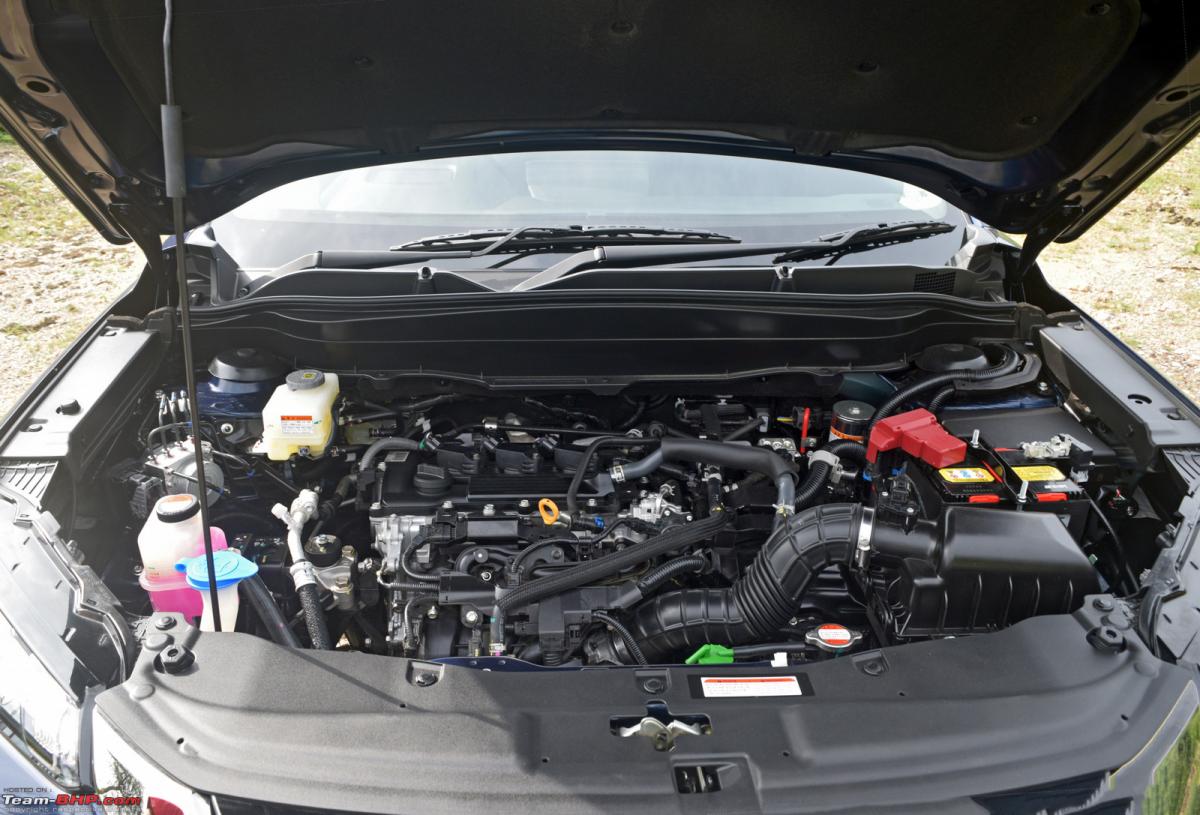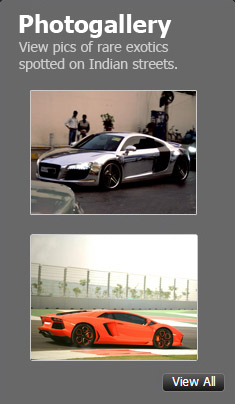News
Maruti Grand Vitara 2022: Observations after a day of driving
The Grand Vitara Intelligent Hybrid gets ubiquitous Macpherson struts at the front and a torsion beam at the rear. It's well-tuned, with a good balance between slow-speed firmness and higher-speed compliance. An errant pothole here or a missed sharp undulation there isn't going to unsettle this car.
Driving the Grand Vitara 1.5L Intelligent Hybrid

This powertrain (and future iterations & applications) is a major aspect of the Maruti-Toyota partnership, with both parties hoping to benefit from shared efficiencies in terms of product placement and meeting increasingly stringent emissions and associated requirements.
The hybrid powertrain consists of a 1490cc, M15A, 3-cylinder Toyota petrol engine built on the TNGA (Toyota New Global Architecture) platform, putting out 91 BHP @ 5,500 rpm and 122 Nm @ 4,400 rpm. This petrol engine is coupled with an AC synchronous motor that puts out 79 BHP and 141 Nm. Total combined output at wheels is an indicated 114 BHP. At 1,295 kg kerb weight, the Grand Vitara has a power-to-weight ratio of just 88 BHP / ton which is rather unimpressive compared to what's available elsewhere in the segment. However, Maruti is focused firmly on efficiency, not outright performance. A 177.6 V, 0.76kWh Li-ion battery in the boot powers the electric motors, responsible for powering the driven wheels in EV & Hybrid mode on electric power. The battery specification means pure EV mode can only really be used for short bursts at a time before the petrol motor needs to kick in to assist the drive and charge the battery.
The Grand Vitara uses a more conventional hybrid system using a power split device as well as an e-CVT transmission that combines the power from the petrol and electric motors. There is no clever drive lock system like in the City here. As a result, the Grand Vitara feels like a regular CVT to drive with some correlation between speed and engine rpm.
Press the brake and hit the blue power button, and all you get is a 'Ready' notification on the MID indicating the car is ON in EV mode. The petrol engine does not engage at idle. So you'll never really hear the engine except on the move when the engine comes on seamlessly to charge the battery (when driving sedately) or power the car directly (when driving aggressively). The combination of the electric motor, the petrol engine on-demand and the efficient e-CVT makes for a smooth urban drive. Closing gaps is a breeze, and driving around is fuss-free overall, even in heavy traffic. Drive with a heavy foot and you will hear more of the petrol engine as it is used not just to charge the battery, but to also send combined power to the wheels. Within the city, the combination of electric motor and e-CVT results in one of the smoothest drive experiences you can imagine. It feels at home pottering around town and you never get tired even when stuck in traffic.
Out on the highway, the lack of outright grunt becomes apparent quickly. Overtakes are not point & squirt, and need to be planned carefully. Performance is brisk cruising up to 90-100 km/h but tapers off from there. The petrol motor gets really vocal, and it's a typical case of all grunt no poke, or something similar fellow mod libranof1987 opined in fruitier language when attempting a pass on a large truck.
Drive sedately and cruise at high-double digit speeds, and you'll have a smooth driving experience with fantastic fuel efficiency. Enthusiastic drivers, look elsewhere.
The Grand Vitara gets drive modes that basically alter the throttle response as well as the behaviour of the internal combustion engine. There is a dedicated EV mode button that will let you drive the Grand Vitara as an EV for the max distance possible. However, if you are heavy on the throttle or the car crosses ~40 km/h or the battery's state of charge is too low, the system will go back from EV mode to hybrid mode. It's basically useful if you want to take the car to drop the kids off at their school bus pick-up point near your house.
Apart from the EV mode, the Intelligent Hybrid gets THREE drive modes: Eco, Normal & Power. These modes provide different throttle responses.
Normal Mode:
This is the default mode which is right in the middle of Eco and Power modes. It works best in town and offers the ideal compromise between efficiency and performance. In fact, you really don't need to change it unless you're driving uphill or on undivided highways.
Eco Mode:
In this mode, the internal combustion engine doesn't come on as easily unless you press the throttle a lot more. The response is lazier and it tries to keep it in hybrid mode with the internal combustion engine only charging the battery and not sending power to the wheels unless the accelerator is pressed very firmly.
Power Mode:
In this mode, it's the opposite. Even with a light dab of the throttle, the internal combustion motor comes alive and assists the power delivery. On undivided highways, this is the mode to use to pull off safe overtakes. Throttle response is much sharper and you rarely see the internal combustion engine turning off. Of course, this mode impacts fuel efficiency the most.
There's also a B mode available via the gear shifter itself, which provides maximum regenerative braking. Very useful going downhill or in other scenarios that need engine braking, and is also efficient at charging the battery quickly.
Noise, Vibration & Harshness (NVH)
An unpleasant surprise, and a potential fly in the ointment. While cabin insulation is decent, the powertrain is quite unlike a typical hybrid like say the Camry or the more recent City e:HEV. The 3-pot M15A petrol motor is unrefined compared to Maruti's own K15C, and gets really vocal at high throttle, with the thrum apparent inside the cabin at higher revs. There's an assortment of whines from electric components, and the car can get fairly audible in silent environments. It's definitely not the 'sneak up on you before you notice' variety. The aural experience is better in the 2nd row, but there's enough to occasionally annoy both the front row occupants. What's good, is that road noise and suspension noise are well contained and overall NVH levels aren't too bad.
Mileage and Fuel Economy
Fuel economy and range are understandably going to be the biggest USPs for the Intelligent Hybrid. The claimed fuel efficiency is a whopping 27.97 km/l. However, driven sedately, it's capable of delivering high double-digit FE as a matter of course, and 20+ kmpl is easily doable with a little attention to the powertrain's characteristics. The trump card is efficiency in heavy traffic, where most internal combustion motors deliver their worst fuel efficiency but hybrids shine. All said and done, it's capable of delivering a tank range that'd make the most efficient diesel motors turn green (with envy, not less polluting).
Suspension
Ride Comfort
The Grand Vitara Intelligent Hybrid gets ubiquitous Macpherson struts at the front and a torsion beam at the rear. It's well-tuned, with a good balance between slow-speed firmness and higher-speed compliance. An errant pothole here or a missed sharp undulation there isn't going to unsettle this car. The ride is pliant overall, but not exactly plush. On the highway, the car is stable and compliant over undulations (unlike its sibling XL6 which gets vertically wallowy in similar circumstances) and can handle broken patches without breaking a sweat. The firmness at slow speeds translates to a stable ride at higher speeds.
Handling & Dynamics
For a crossover, driving dynamics are surprisingly car-like. High-speed stability is good, and the car doesn't break stride with quick changes of direction. On fast curves, we could hold a line at decent speeds without understeering or needing mid-corner steering corrections. The chassis seems capable of handling a lot more than the powertrain is capable of delivering, which is great or unfortunate, depending on whether one's a glass half empty or half full kind of driver.
Steering
The steering is well-calibrated, and not feather-light like a typical Maruti. It weighs up nicely with speed and isn't vague like some of the Korean specimens. There's a fair amount of play at dead center and a lack of overall feedback, but nothing to catch a driver by surprise.
Braking
With discs front & back, braking is efficient and fuss-free. We were able to bring the car to a stop from 80 km/h in a straight line without drama. What does take a little getting used to, is the non-linear braking response, which could possibly be down to a combination of regenerative braking and the vacuum booster being electric rather than driven off the ICE motor.
Driving the 1.5L MT with AllGrip Select AWD

The other interesting offering on the Grand Vitara is the AllGrip variant equipped with Suzuki's famed AllGrip Select AWD system. Note that the AllGrip variant is offered only on the 1.5-L, 4-cyl petrol engine (Without the Intelligent Hybrid) with a 5-speed MT. Maruti had set up a customized off-road track at the venue with a variety of ramps, inclines, articulation pits, see-saws, a mud-slush pit and an icy incline to demonstrate the AWD's traction management, suspension articulation and terrain handling capabilities.
The AllGrip Select module comes with four dynamically selectable modes: Auto, Sport, Snow and Lock.
Auto:
Predominantly 2WD mode on normal terrain, focused on fuel economy. It intelligently detects slippage on driven front wheels and redirects power proportionally to rear wheels to stabilize grip. Once the front wheels are detected to have regained sufficient grip, the powertrain shifts back to 2WD.
Sport:
Meant for sporty driving, mainly focused on generating higher torque from lower throttle input, to improve acceleration response. The system dynamically detects throttle, steering inputs and other parameters to allocate optimal power to rear wheels, improving traction and cornering stability.
Snow:
Predominantly 4WD mode on slippery surfaces. It helps counter wheelspin in conjunction with ESP and maintains directional stability by dynamically allocating power to relevant wheels to adjust traction.
Lock:
Focused on extricating the vehicle from situations with limited traction. It uses feedforward control to allocate power to the rear wheels prior to throttle application and stands by, then dynamically adjusts torque 50:50 to the front and rear wheels as the throttle is applied. When one or more wheels are slipping, ESP steps in to apply braking on the slipping wheels while maintaining torque and distributing to gripping wheels to enhance extrication ability.
While there's understandable scepticism of the track being customized for the vehicle and demo runs being done under the guidance of trained instructors in a controlled environment, one needs to see it in the context of the target demographic. The vehicle is NOT meant for hardcore off-roading by seasoned professionals. It's meant for laymen customers finding themselves in a sticky situation out on the road and equipping them to extract themselves safely.
It also takes nothing away from the fact that some of the obstacles were indeed challenging. And that the vehicle itself and the AllGrip system acquitted themselves admirably, leaving many impressed with its ability to handle the simulated terrain. Overnight rains rendered most surfaces more slippery than the organizer had intended, the slush pit was nearly a foot deep in several places, and the cars were shod with rather average road-going tires. More than one participant opined they'd love to see what the car can do with some proper shoes and on tougher terrain, and we're inclined to concur.
The Grand Vitara, equipped with AllGrip Select is a capable soft-roader and could provide significant product differentiation in a crowded crossover segment. We hope Maruti price it sensibly, and offer it on more trim levels in the future.
Driving the 1.5L Petrol AT
We got a chance to take a very short spin in the regular Smart Hybrid equipped with a 6-speed torque converter AT, the same powertrain as the 2022 XL6 and the Brezza. We wanted to check if Maruti has tweaked the powertrain in any way to make it a little peppier on this larger CSUV. However, we are disappointed to report the drive experience is nearly identical, with the variant powered by a 1,462 cc, naturally aspirated K15C DualJet petrol engine that puts out 102 BHP @ 6,000 rpm and 137 Nm @ 4,400 rpm performing just as lethargically as its siblings (click here to read the drive report).
This variant may find buyers amongst the price-conscious and those that don't need the AWD, but either of those is a better option performance-wise compared to the refined but dull K15C.
Continue reading the discussion on the Maruti Grand Vitara on our forum.



















